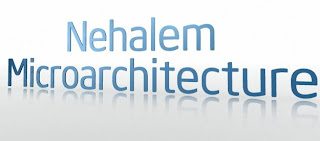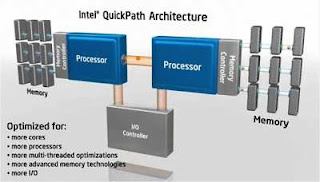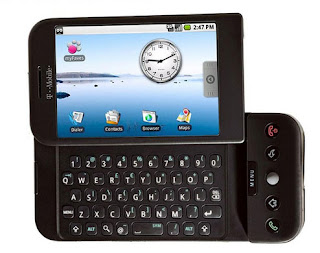 Intel has a new delight in the micro processor market; it is a better performing new micro-architecture from Intel – Nehalem. This will replace the Intel’s present Core 2 architecture. Happy news for the die hard Intel fans is that, Intel’s chief people have told that they would from now on introduce new processor architecture every two years. Business aside, the new architecture holds a lot of technical goodies to talk about. Intel delivered the Core i7 processor and the X58 Chipset based on Nehalem technology. Nehalem is a Quad Core Solution scalable to 2 and 8 cores.
Intel has a new delight in the micro processor market; it is a better performing new micro-architecture from Intel – Nehalem. This will replace the Intel’s present Core 2 architecture. Happy news for the die hard Intel fans is that, Intel’s chief people have told that they would from now on introduce new processor architecture every two years. Business aside, the new architecture holds a lot of technical goodies to talk about. Intel delivered the Core i7 processor and the X58 Chipset based on Nehalem technology. Nehalem is a Quad Core Solution scalable to 2 and 8 cores.Two Divisions: Intel like AMD now splits the processor working into two major segments, the Core and the Uncore. The Core consists of all the Physical Cores along with their L1/L2 Caches. The Uncore region has three important parts of the processor, the memory controller, the L3 Cache and the QPI interface. There are two different clocks for this CPU. The Cores runs with the QPI clock with a suitable multiplier. The DDR3 memory controller and the L3 cache runs on the Uncore clock which could be different. A specific core could be effectively turned off when the need arises.
Turbo Mode and Cache: The Turbo mode, it offers a meager rise in clock speed when the processor is running under stable conditions and could offer better clock. The Turbo mode is totally governed by the CPU temperature. The Cache sizes are the lowest in recent times. But it is said that Cache is shared equally amongst the cores rather than each one having its own. Better and smarter utilization of the Cache eliminates the need for a larger one. But there will be increase in the L3 Cache size. As Intel says, the smart cache eliminates latency to increase performance.
QuickPath Technology: This is Intel’s synonym to AMD HyperTransport. Improved Parallelism and Point to Point connectivity are primary benefits. Finally, the Front Side Bus or the FSB will be replaced with QuickPath Interconnect (QPI). QuickPath enables direct access to the Memory and the I/O HUB (Yes, MCH is no more). This increases the access rate by three times. Also Multi-Processor Environments will be greatly benefited with QPI. QPI offers up to 25.6GBps inter processor bandwidth and 32GBps Memory Bandwidth. Normal end systems will have a single QPI and high-end machines will feature two of them, QPI-0 and QPI-1.

HyperThreading Strikes back: Intel has re-implemented the HT Technology in Nehalem Platform that was earlier used in the Pentium 4 Series of Processors. HyperThreading is a specialized form of Simultaneous Multithreading. HT enables individual cores to handle more threads to facilitate better performance. HT was said to be power inefficient, but with today’s memory bandwidth I think that including HT makes the architecture power efficient.
Socket and Dimensions: The new Nehalem uses Socket B or LGA1366. It could replace both the LGA771 and LGA775 due to its support for QPI. There are also some speculations that there will be two more sockets, LGA1160 for desktops and LGA1567 for high end server platforms. The physical size of the processor is more than the earlier processors by 20% paving way for larger heatsink, increased TDP.


Some Important Features: Nehalem is completely fabricated under the 45nm manufacturing process. It will support native (all cores on single die) 2, 4 and 8 cores. It incorporates the new SSE 4.2 SIMD. Review of Core i7 from AnandTech confirms a 30% performance increase in performance with 10% rise in power consumption. Some points to note are better Loop Stream Detector, Supports DDR3 only, eight core systems will be available, triple channel memory support.

Nehalem will be available at the end of 2008. Nehalem is aimed at the server workstation platform. The Specs and numbers provided here need not be exact as this is just Nehalem’s entry. Looking at the future, two other Lynnfield and Havendale are due 2010. These processors are said to include direct link with their GPU and Integrated GPU Core respectively. Also 2009-2010 will see Westmere and Sandy Bridge under 32nm fabrication. Nehalem is expected to move from 45nm to 32nm before them. After writing this post, I have only one thing left in my mind – what does AMD have for Intel???









